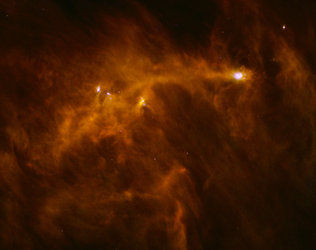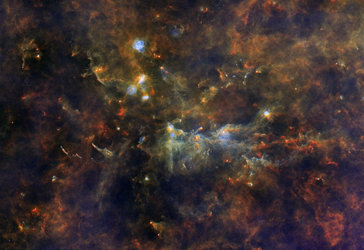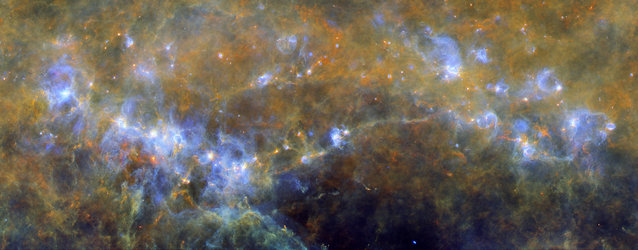Accept all cookies Accept only essential cookies See our Cookie Notice

About ESA
The European Space Agency (ESA) is Europe’s gateway to space. Its mission is to shape the development of Europe’s space capability and ensure that investment in space continues to deliver benefits to the citizens of Europe and the world.
Highlights
ESA - United space in Europe
This is ESA ESA facts Member States & Cooperating States Funding Director General Top management For Member State Delegations European vision European Space Policy ESA & EU Space Councils Responsibility & Sustainability Annual Report Calendar of meetings Corporate newsEstablishments & sites
ESA Headquarters ESA ESTEC ESA ESOC ESA ESRIN ESA EAC ESA ESAC Europe's Spaceport ESA ESEC ESA ECSAT Brussels Office Washington OfficeWorking with ESA
Business with ESA ESA Commercialisation Gateway Law at ESA Careers Cyber resilience at ESA IT at ESA Newsroom Partnerships Merchandising Licence Education Open Space Innovation Platform Integrity and Reporting Administrative Tribunal Health and SafetyMore about ESA
History ESA Historical Archives Exhibitions Publications Art & Culture ESA Merchandise Kids Diversity ESA Brand Centre ESA ChampionsLatest
Space in Member States
Find out more about space activities in our 23 Member States, and understand how ESA works together with their national agencies, institutions and organisations.
Science & Exploration
Exploring our Solar System and unlocking the secrets of the Universe
Go to topicAstronauts
Missions
Juice Euclid Webb Solar Orbiter BepiColombo Gaia ExoMars Cheops Exoplanet missions More missionsActivities
International Space Station Orion service module Gateway Concordia Caves & Pangaea BenefitsLatest
Space Safety
Protecting life and infrastructure on Earth and in orbit
Go to topicAsteroids
Asteroids and Planetary Defence Asteroid danger explained Flyeye telescope: asteroid detection Hera mission: asteroid deflection Near-Earth Object Coordination CentreSpace junk
About space debris Space debris by the numbers Space Environment Report In space refuelling, refurbishing and removingSafety from space
Clean Space ecodesign Zero Debris Technologies Space for Earth Supporting Sustainable DevelopmentLatest
Applications
Using space to benefit citizens and meet future challenges on Earth
Go to topicObserving the Earth
Observing the Earth Future EO Copernicus Meteorology Space for our climate Satellite missionsCommercialisation
ESA Commercialisation Gateway Open Space Innovation Platform Business Incubation ESA Space SolutionsEnabling & Support
Making space accessible and developing the technologies for the future
Go to topicBuilding missions
Space Engineering and Technology Test centre Laboratories Concurrent Design Facility Preparing for the future Shaping the Future Discovery and Preparation Advanced Concepts TeamSpace transportation
Space Transportation Ariane Vega Space Rider Future space transportation Boost! Europe's Spaceport Launches from Europe's Spaceport from 2012Latest

Herschel reveals a ribbon of future stars
Thank you for liking
You have already liked this page, you can only like it once!
Star formation is taking place all around us. The Milky Way is laced with clouds of dust and gas that could become the nursery of the next generation of stars. Thanks to ESA’s Herschel space observatory, we can now look inside these clouds and see what is truly going on.
It may seem ironic but when searching for sites of future star formation, astronomers look for the coldest spots in the Milky Way. This is because before the stars ignite the gas that will form their bulk must collapse together. To do that, it has to be cold and sluggish, so that it cannot resist gravity.
As well as gas, there is also dust. This too is extremely cold, perhaps just 10–20 degrees above absolute zero. To optical telescopes it appears completely dark, but the dust reveals itselfat far-infrared wavelengths.
One of the surprises is that the coldest parts of the cloud form filaments that stretch across the warmer parts of the cloud. This image shows a cold cloud filament, known to astronomers as G82.65-2.00. The blue filament is the coldest part of the cloud and contains 800 times as much mass as the Sun. The dust in this filament has a temperature of –259ºC. At this low temperature, if the filament contains enough mass it is likely that this section will collapse into stars.
This image is colour-coded so that the longest infrared wavelength, corresponding to the coldest region, is shown in blue, and the shortest wavelength, corresponding to slightly warmer dust, is shown in red.
The field of view on display here is a little more than two times the width of the full Moon. It is one of 116 regions of space observed by Herschel as part of the Galactic Cold Cores project. Each field was chosen because ESA’s cosmic microwave background mapper, Planck, showed that these regions of the galaxy possessed extremely cold dust.
-
CREDIT
ESA/Herschel/SPIRE/M. Juvela (U. Helsinki, Finland) -
LICENCE
ESA Standard Licence

Star formation in the Chamaeleon

The Little Fox and the Giant Stars

Stars forming in the Taurus Molecular Cloud

Herschel reveals filaments in the Serpens Core















 Germany
Germany
 Austria
Austria
 Belgium
Belgium
 Denmark
Denmark
 Spain
Spain
 Estonia
Estonia
 Finland
Finland
 France
France
 Greece
Greece
 Hungary
Hungary
 Ireland
Ireland
 Italy
Italy
 Luxembourg
Luxembourg
 Norway
Norway
 The Netherlands
The Netherlands
 Poland
Poland
 Portugal
Portugal
 Czechia
Czechia
 Romania
Romania
 United Kingdom
United Kingdom
 Slovenia
Slovenia
 Sweden
Sweden
 Switzerland
Switzerland
























